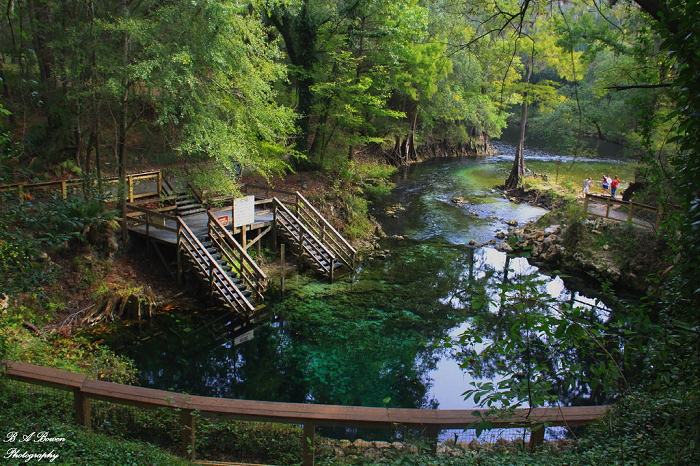Blue Springs State Park is a public recreation area located 7 miles (11 km) east of Clio in Blue Springs, Barbour County, Alabama.
The 103-acre (42 ha) state Park has a clear blue natural underground spring that pumps 3,600 US gallons (14,000 liters) of water per hour into two concrete ring pools..
The recreational area of the park was expanded in 2013 when the Forever Wild Land Trust acquired 100 acres of land adjacent to the park in order to create hiking trails. The Magnolia Trail, along with two short connecting trails, opened in 2018. The trail crosses 2 miles of forest in southeast Alabama and provides views of the west fork of the Choctawhatchee River. The beginning of the trail is in the park, and most of the trail passes through the adjacent territory of the Forever Wild Blue Springs State Park.
The Harrison Hotel, built in 1890, was one of the first attempts to turn the village of Blue Springs into a health resort. Ten years later, J.T.E. Whigham began work on the Blue Springs Hotel, which eventually had 28 rooms and a modern bathhouse. In 1913, the spring pool was lined with concrete, and another smaller pool designed for children was added to it. The area has become a popular venue for political rallies, three-day horse auctions, and annual meetings of Confederate soldiers. The large pool remained in operation until about 1938. J. D. McLaughlin sold the property to the state, resulting in the creation of a state park in 1963.
There is a stone monument to Dr. James Daniel at the entrance to the park. McLaughlin (1880-1953), a physician who studied at the Atlanta College of Physicians and Surgeons and in the advanced training program of the University of Alabama in Mobile.


